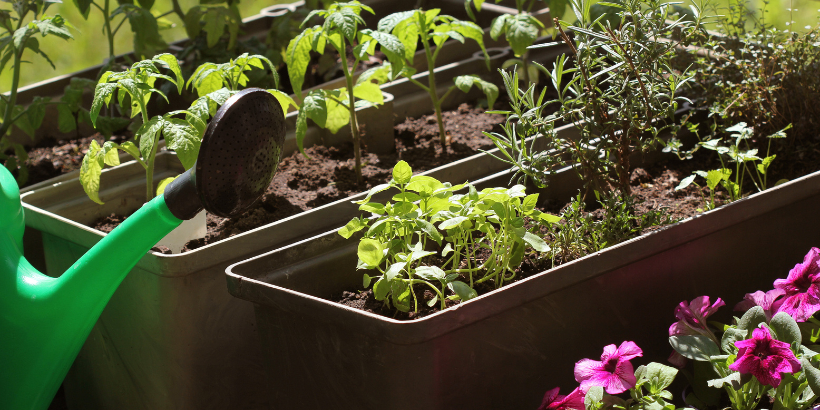Sustainable Gardening Practices for an Eco-Friendly Garden
Recognizing the Various Kinds of Gardening and Just How They Contribute to a Much Healthier Lifestyle and Environment

Advantages of Vegetable Gardening
Many individuals are progressively identifying the myriad advantages of vegetable horticulture as a vital element of a healthier way of living. Taking part in veggie horticulture uses numerous physical wellness benefits, including raised physical task, which enhances cardio health and wellness and advertises general physical fitness. The act of growing, weeding, and harvesting needs movement and can assist battle sedentary behaviors, adding to weight monitoring and improved muscle mass tone.
Furthermore, growing one's own veggies considerably enhances dietary high quality. Homegrown produce is frequently fresher and much more nutrient-dense compared to store-bought alternatives, as it can be consumed shortly after harvest. This availability urges a greater intake of fruits and veggies, which are essential for avoiding chronic conditions.
Additionally, veggie gardening promotes mental well-being by providing a therapeutic outlet for stress and anxiety alleviation and relaxation. Jointly, these advantages underscore the significance of vegetable horticulture as a keystone of a healthier way of living.
Checking Out Blossom Horticulture

Along with aesthetic advantages, flower horticulture sustains local communities. Numerous flowering plants bring in pollinators, such as bees and butterflies, which are essential for maintaining biodiversity. The existence of varied plants can likewise enhance dirt wellness, as various plants add to nutrition cycling and improve dirt structure.
Additionally, blossoms can play a considerable role in promoting lasting methods. Numerous gardeners go with indigenous or drought-resistant species, which need less water and very little chemical inputs. This strategy not only profits the setting but additionally encourages responsible horticulture habits.
Inevitably, flower gardening acts as a crucial part of a holistic gardening approach. Gardening. By cultivating beauty and sustaining local environments, it integrates with vegetable gardening and underscores the importance of supporting both our physical and mental health with nature
Container Horticulture Advantages
Container gardening offers numerous advantages that make it an attractive option for both novice and seasoned gardeners. One of the main advantages is its adaptability; containers can be put on patio areas, terraces, or perhaps inside, enabling for gardening in spaces with minimal ground access. This flexibility enables people in urban settings or those with little backyards to cultivate plants successfully.
Furthermore, container gardening provides boosted control over soil quality and wetness levels. Garden enthusiasts can select certain dirt blends to enhance plant health and minimize problems like weeds and pests. The movement of containers likewise permits simple relocation to optimize sunlight exposure or protect plants from inclement weather.
Additionally, container yards can be aesthetically pleasing, using an opportunity for creativity in layout. Gardening. They can function as ornamental aspects that boost exterior or indoor areas while promoting biodiversity by bring in pollinators
Lastly, container horticulture can add to a healthier way of living by encouraging exercise, as it usually entails lifting, planting, and preserving plants. On the whole, the benefits of container gardening make it an available and rewarding practice for those seeking to boost their way of living and atmosphere.
The Surge of Upright Horticulture
As urban spaces end up being significantly crowded, the trend of upright horticulture has taken off, allowing people to optimize their horticulture possibility in limited locations. This cutting-edge technique involves growing plants in vertical frameworks, such as wall-mounted planters, trellises, or specialized upright garden systems. The allure of vertical horticulture lies not only in its reliable usage of room however also in its aesthetic contribution to city settings, transforming bare walls into rich environment-friendly landscapes.
Upright yards can be installed in homes, terraces, and community areas, giving a platform for growing a selection of plants, consisting of herbs, vegetables, and ornamental flowers. This technique encourages biodiversity and can improve air high quality by filtering system pollutants while promoting a link to nature in densely booming areas. In addition, vertical horticulture supplies useful advantages, such as improved yield per square foot, making it an eye-catching choice for city gardeners looking for to grow their very own food.

Lasting Practices in Horticulture
Embracing sustainable methods in horticulture is vital for advertising ecological health and wellness and ensuring the viability of our natural resources. Lasting horticulture strategies focus on decreasing ecological impact, saving water, and promoting biodiversity. By carrying out techniques such as natural horticulture, gardeners can minimize making use of artificial fertilizers and pesticides, which can harm neighborhood ecological communities.
Buddy growing is one more reliable sustainable method, where particular plants are expanded with each other to improve development and hinder bugs naturally. Additionally, using indigenous plants in landscaping sustains neighborhood wild animals and requires much less maintenance, as they are inherently adapted to the neighborhood environment and dirt conditions.
Water preservation techniques, such as rain harvesting and drip irrigation, aid to effectively take care of water sources, thus reducing waste. Moreover, composting organic waste not just enhances the soil you can check here but also decreases landfill payments, promoting a round economy.
Finally, exercising plant turning and cover chopping enhances dirt health and minimizes the threat of insect visit the site invasions. By integrating these lasting techniques, garden enthusiasts can create durable communities that add to a much healthier lifestyle while protecting the atmosphere for future generations.
Final Thought

Finally, the varied techniques of gardening, including vegetable, blossom, container, and upright gardening, jointly advertise a much healthier way of life and enhance ecological sustainability. Each type provides distinct benefits, from supplying fresh produce and drawing in pollinators to maximizing restricted spaces and motivating biodiversity. By fostering lasting practices, these gardening comes close to not just add to private health yet also sustain wider ecological preservation initiatives, eventually navigate to this website reducing dependence on business agriculture and enhancing neighborhood durability.